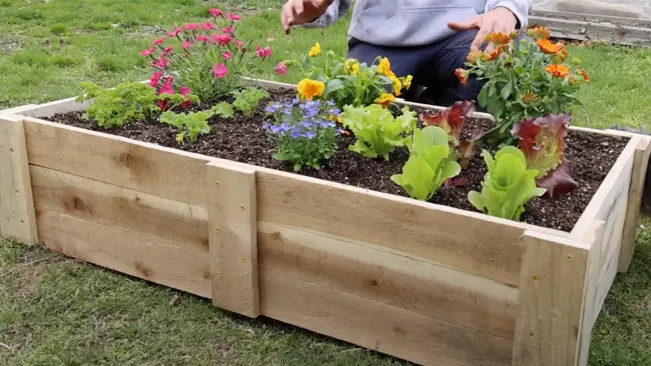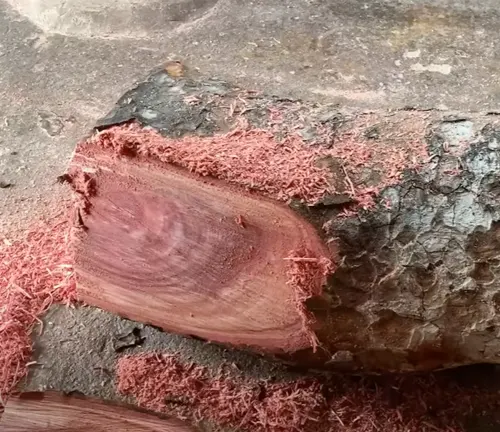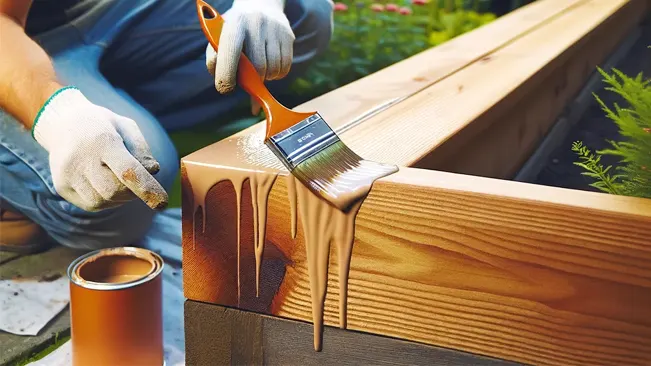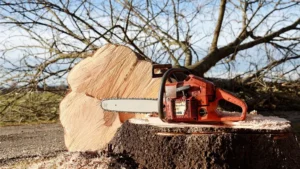How to Shield Garden Bed Wood: Effective Protection Strategies
- February 1, 2024
- 0 comment
Gardening is not just about planting seeds and watching them grow; it’s also about creating a sustainable and beautiful environment. One of the key elements in many gardens is the wooden garden bed, which provides a structured and aesthetically pleasing area for plants to thrive. However, wood, being a natural material, is vulnerable to damage from weather, pests, and rot. Protecting your garden bed wood is essential to ensure its longevity and maintain the beauty of your garden.

Understanding Wood Types and Their Vulnerabilities
Types of Wood
Garden beds can be made from a variety of woods, each with its unique characteristics and levels of durability. Common choices include cedar, redwood, and pressure-treated pine. Cedar and redwood are naturally resistant to decay, while pressure-treated wood has been chemically treated to resist rot and pests.

Cedar Wood
Cedar is a highly favored wood for garden beds due to its natural resistance to decay and its ability to repel many pests and insects. This wood contains natural oils and tannins that provide its protective properties, reducing the need for chemical treatments. Cedar’s durability is well-regarded, with a lifespan that can extend beyond 10 to 15 years in outdoor conditions when properly maintained. Additionally, cedar’s pleasant aroma and attractive grain make it a visually appealing choice for garden beds.
Redwood
Redwood is another excellent choice for garden beds, prized for its exceptional resistance to decay and insects, similar to cedar. This resistance is due to the presence of natural compounds within the wood that inhibit rot and deter pests. Redwood also stands up well to outdoor elements, offering a long lifespan that can rival or even exceed that of cedar. Its rich, warm color and straight grain add a touch of elegance to garden beds, making it not only a durable but also an aesthetically pleasing option.


Pressure-Treated Pine
Pressure-treated pine is treated with chemicals to resist decay and pests, unlike naturally resistant cedar and redwood. It’s more affordable but requires checking for plant-safe treatments. Modern versions are generally safe for gardens. Although not as long-lasting as cedar or redwood, it still offers good durability for garden beds.
Common Vulnerabilities
All wood types are prone to damage from moisture, UV light, and insects, which can lead to rot, fading, and structural weakness. Recognizing these risks is key to selecting effective protection strategies, such as using resistant wood like cedar, applying protective treatments, or regular maintenance to prolong the wood’s life in garden beds.
Initial Steps Before Applying Protective Measures
Cleaning and Sanding
Preparing the wood surface through cleaning and sanding is an essential step before applying any protective treatments to garden bed wood. This preparatory process involves removing all traces of dirt, grime, and previously applied finishes, which might interfere with the new treatment’s ability to bond effectively with the wood. Cleaning eliminates surface contaminants, while sanding smooths out rough areas, ensuring that the protective coating can be applied evenly.

This meticulous preparation not only enhances the wood’s aesthetic appeal by creating a smooth, clean surface but also maximizes the longevity and effectiveness of the protective layer, ensuring it adheres properly and provides the intended level of protection against environmental elements.
Assessing the Condition
Thorough inspection of the wood for any signs of damage, including cracks, splinters, or rot, is a critical preliminary step prior to the application of protective treatments on garden bed wood. Identifying and addressing these imperfections early on is vital for the overall success of the protective measures. Cracks and splinters can compromise the structural integrity of the wood, while rot indicates a more advanced stage of decay that could undermine the effectiveness of any applied treatments.

Repairing or replacing damaged sections of wood before proceeding with protective coatings ensures that the treatments can perform optimally, providing a uniform barrier against moisture, pests, and other environmental factors that could further degrade the wood. This proactive approach not only enhances the aesthetic appearance of the garden beds but also significantly extends their lifespan, ensuring they remain functional and attractive for longer periods.
Choosing the Right Protective Treatments
Sealants
Sealants are a favored option for garden bed wood protection, offering a clear layer that repels moisture and blocks UV rays. This barrier helps prevent rot and fading, extending the wood’s lifespan and preserving its appearance without altering its natural look. Ideal for maintaining wood integrity, sealants are essential for long-lasting garden beds.

Stains
Wood stains are valuable for garden beds, offering both aesthetic appeal and protection. By adding color, they enhance the wood’s appearance, while their preservative components guard against rot and pests. Stains penetrate deeply into the wood, ensuring the protection is thorough and durable, making them an effective solution for both beautifying and preserving garden bed wood against environmental challenges.

Paints
Paint can offer a solid protective layer for garden bed wood, shielding it from environmental damage. However, its tendency to chip and peel over time makes it a less ideal choice for garden beds, as it requires more maintenance to keep the protective layer intact and the appearance fresh. This additional upkeep can be a drawback for those seeking low-maintenance garden bed solutions.

Application Techniques for Maximum Protection
Brush vs. Spray
When it comes to applying protective treatments on garden bed wood, two primary methods stand out: brushing and spraying. Each technique offers distinct advantages tailored to specific needs and project requirements. Here’s a closer look at both:
Brushing
- Provides detailed coverage and deep penetration.
- Ideal for reaching into joints and crevices.
- Ensures a thorough protectant layer.
- Best suited for projects requiring precision.
Spraying
- Offers a quicker, more uniform application.
- Suitable for covering larger areas.
- Potentially less penetration into finer details of the wood.
- Best for projects where efficiency is prioritized over precision.
Number of Coats
Applying multiple coats of protective treatment to garden bed wood can significantly improve its resistance to environmental damage. However, it’s crucial to adhere to the manufacturer’s guidelines on the recommended number of coats and the required drying times between applications. This ensures that each layer bonds correctly and the protection is effective, preventing issues like inadequate coverage or a poor-quality finish. Proper adherence to these instructions optimizes the protective benefits and longevity of the treatment.
Natural Alternatives for Wood Protection
Oils and Waxes
Natural oils and waxes offer an eco-friendly alternative for protecting garden bed wood, providing a water-resistant yet breathable layer that maintains the wood’s natural aesthetics. These treatments penetrate the wood, enhancing its grain and beauty while preventing moisture damage. Ideal for those prioritizing sustainability, oils and waxes allow the wood to release internal moisture, reducing the risk of decay, and preserving the wood’s natural charm without heavy, synthetic coatings.
Eco-Friendly Choices
Eco-friendly and non-toxic protective options for garden bed wood, such as natural oil finishes and water-based sealants, provide effective protection while being safe for the environment and garden plants. These sustainable choices avoid harmful chemicals, ensuring the garden remains a safe space for all its inhabitants, from pollinators to people, and align with environmentally responsible gardening practices.
Maintenance and Care for Long-Term Durability
Regular Inspections
Regular inspections of garden bed wood are essential for early detection of wear or damage, enabling timely maintenance and repairs. This practice helps in identifying issues like cracks, rot, or pest damage at an early stage, allowing for quick fixes that maintain the wood’s integrity and appearance. Such preventative care not only prolongs the life of garden beds but also supports sustainable gardening by minimizing the need for extensive repairs or replacements.
Reapplication Schedules
Protective finishes on garden bed wood will wear down due to environmental exposure, necessitating periodic reapplication to maintain their protective efficacy. Following the manufacturer’s guidelines for reapplication frequency ensures the wood remains shielded against moisture, pests, and UV damage. Regular maintenance, based on these recommendations, is crucial for sustaining the wood’s protection and prolonging the lifespan of garden beds, keeping them in good condition over time.
The Impact of Weather and Climate
Weatherproofing Strategies
Adjusting your wood protection strategy to match local weather is key, especially in high humidity or rainy areas. These conditions necessitate advanced waterproofing to prevent moisture-related issues like rot and fungal growth. Employing stronger sealants or moisture-resistant treatments ensures the garden bed wood remains protected against the elements, preserving its integrity and appearance. This targeted approach to wood care helps maintain the longevity of garden beds in any climate.
Climate Considerations
Choosing materials and protective treatments for garden bed wood should be influenced by the local climate, as different products excel under varying conditions. In areas with drastic temperature changes, materials that resist cracking are ideal, while humid climates demand treatments with strong waterproofing and anti-fungal properties. For places with intense sun exposure, UV-resistant options are crucial. Tailoring your choices to the climate ensures the garden beds are equipped to endure local weather challenges, reducing maintenance needs and extending their lifespan. This strategic selection helps maintain the garden’s beauty and functionality over time.
DIY vs. Professional Solutions
When it comes to protecting and maintaining garden bed wood, homeowners often weigh the options between DIY (Do-It-Yourself) approaches and hiring professionals. Each option comes with its own set of advantages and disadvantages:
DIY Solutions
Pros
- DIY projects typically cost less than hiring professionals since you save on labor costs.
- Completing a project on your own can provide a sense of accomplishment and allow for customization according to personal preferences.
- You have the freedom to work on the project at your own pace and schedule.
Cons
- DIY projects can be more time-consuming, especially for those who are learning as they go.
- Without professional experience, there’s a higher risk of mistakes, which can lead to additional costs or the need to redo the work.
- DIYers might lack the specialized knowledge and tools that professionals have, potentially affecting the quality and durability of the project.
Professional Solutions
Pros
- Professionals bring specialized skills, ensuring the work is done correctly and to a high standard.
- With experience and the right tools, professionals can complete the job more quickly and efficiently.
- Professional work often comes with a warranty, offering peace of mind and protection against potential issues.
Cons
- Hiring professionals is generally more expensive due to labor and service fees.
- You may have less control over the specifics of the project, including materials and timing.
- You’ll need to work around the professional’s schedule, which might not align with your own.
In summary, the choice between DIY and professional solutions for garden bed wood maintenance depends on individual preferences, budget, available time, and desired project outcomes.
When to Call a Professional
Consulting a professional for your garden bed wood protection, especially when facing uncertainty or significant damage, offers peace of mind and ensures effective solutions. Experts bring specialized knowledge to assess and address issues accurately, eliminating guesswork and preventing further damage. This approach not only saves time and resources but also guarantees durable and visually appealing outcomes for your garden.
Related Topics
- How to Construct a Charming Wood Garden Gate: A Beginner-Friendly Guide
- Maximizing the Lifespan: How Long Do Wooden Garden Beds Really Last?
Conclusion
Protecting your garden bed wood is not just about preserving its appearance; it’s about ensuring the structural integrity and longevity of your garden beds. By understanding the types of wood, their vulnerabilities, and the various protective treatments available, you can make informed decisions that will keep your garden beds in top condition for years to come.
FAQs
- What preventive measures can I take to extend the life of my garden bed wood?
To extend the life of your garden bed wood, ensure proper drainage to prevent waterlogging, avoid direct soil contact by using a liner, and regularly clean and inspect the wood for early signs of damage or decay. - Can I restore weathered garden bed wood to its original state?
Weathered garden bed wood can often be revitalized by cleaning, sanding, and applying a new coat of protective treatment. However, if the wood is severely rotted or damaged, replacement might be the only viable option. - How does the thickness of the wood affect its durability in garden beds?
Thicker wood tends to be more durable and resistant to rot and wear, providing a longer lifespan for garden beds. It offers better insulation for soil and is less prone to warping or cracking compared to thinner wood. - Are raised garden beds more susceptible to wood rot, and how can it be prevented?
Raised garden beds can be more susceptible to rot due to increased exposure to moisture. Prevention includes using rot-resistant wood, ensuring good drainage, applying protective treatments, and avoiding direct contact with the ground by using barriers. - What is the environmental impact of using treated wood for garden beds, and are there safer alternatives?
Treated wood can release chemicals into the soil, potentially impacting plant health and the environment. Safer alternatives include naturally rot-resistant woods like cedar and redwood or using untreated wood with natural, non-toxic protective treatments. - What steps should I take to prepare my garden bed wood before applying protective treatments?
Before applying any protective treatments, it’s crucial to clean the wood thoroughly to remove any dirt, debris, or old finishes. Sanding the wood is also recommended to create a smooth surface for better adherence of the protective treatment. - Is it necessary to treat the inside of the garden bed wood, or just the outside?
While the outside of the garden bed wood is more exposed and thus more vulnerable to environmental factors, treating the inside can provide additional protection, especially against moisture from the soil and potential pests. - How does weather and climate affect the choice of protective treatment for garden bed wood?
The local weather and climate can significantly impact the effectiveness of protective treatments. For example, areas with high humidity or frequent rainfall might require more robust waterproofing solutions, while areas with intense sun exposure might necessitate treatments with UV protection. - Can I apply protective treatments to old garden bed wood, or is it only for new wood?
Protective treatments can be applied to both new and old garden bed wood. However, older wood may require more preparation, such as cleaning, sanding, and repairing any damage, to ensure the treatment adheres properly and provides effective protection. - What are the signs that my garden bed wood is beyond protection and needs to be replaced?
Signs that garden bed wood may need to be replaced include significant rot, persistent mold or mildew, large cracks that compromise the structure, and extensive termite or pest damage. If the wood is too deteriorated, protective treatments may not be sufficient to salvage it.

Charles Hayes
Forestry AuthorI'm Charles Hayes, I bring over 15 years of specialized expertise in landscaping and woodworking, blending artistic design with sustainable environmental stewardship. My career, fueled by a profound passion for the natural world, encompasses extensive education and hands-on experience in creating harmonious, eco-friendly outdoor spaces and responsibly managing forest resources. Recognized for my professional standing, I am committed to continuous learning and certification in cutting-edge practices. My expertise is not only reflected in my work but also in my contributions to community projects, educational workshops, and collaborations with industry leaders. As an authoritative voice in my field, I strive to share knowledge and promote environmentally conscious approaches, making me a trusted resource in landscaping and forestry.













Leave your comment